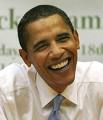Source: The Washington Times als on AP
12th May 2010
The Obama administration unveiled a new drug-control policy Tuesday that emphasizes community-based prevention and the role of doctors in screening for drug problems, signaling a shift in strategy while continuing to embrace key tenets of the decades-old war on drugs.
But while the strategy outlined Tuesday represents a new tack on several fronts, supporters and critics of the drug war alike agreed it’s not a major departure from previous administrations.
“When push comes to shove, they’re making a few little steps and giving lip service in the direction of a public-health approach, but you can still see their knee-jerk reflex is to focus on law enforcement and supply-and-control strategies that have never worked well in the past,” said Ethan Nadelmann, executive director of the Drug Policy Alliance, a group devoted to ending the federal drug war.
The White House’s first anti-drug plan calls for prevention at the local level through mentoring programs and education initiatives, not just for children, but also for their parents at the workplace, as well as expanding treatment programs from specialty facilities to community health centers. The policy also lays out a series of five-year goals that include cutting youth drug use by 15 percent, drug-caused deaths by 15 percent and instances of “drugged driving” by 10 percent.
Obama drug czar Gil Kerlikowske billed the strategy as “a balanced policy of prevention, treatment, enforcement and international cooperation.”
The administration has already taken some steps to reform drug policy, repealing a long-standing ban on federal funds for needle-exchange programs aimed at preventing HIV and deferring to states that pass laws allowing medical marijuana. Mr. Obama has also asked Congress to amend federal law so that sentencing guidelines treat crack and powder cocaine the same.
As a candidate for the Senate in 2004, Mr. Obama described the war on drugs as an “utter failure” and suggested the country look at decriminalizing marijuana, but he has consistently sided against legalization as president. Indeed, the White House policy stresses that the administration “firmly opposes the legalization of marijuana or any other illicit drug.”
While Mr. Nadelmann lauded some of the administration’s efforts, he likened changing U.S. drug policy to “trying to turn around an ocean liner.” He said the administration’s budget reflects a continued emphasis on prosecution and imprisonment, as opposed to tackling drug addiction as a health issue.
At the other end of the spectrum, Calvina L. Fay of the Drug Free America Foundation praised the administration for “still embracing the comprehensive approach with prevention, treatment and law enforcement all having a role to play.”
In particular, Mrs. Fay said she was pleased to see a focus on educating parents in the workplace, where they’re a captive audience, as well as efforts to curb substance abuse among prisoners.
But she said she was disappointed at what appeared to be a lack of emphasis on random drug testing in schools. “From what we’ve seen, that’s been a very effective approach not only in intervening … it’s been a tremendous deterrent.”
The Obama plan also includes a push to screen patients early for signs of substance abuse, even during routine appointments, and the expansion of prescription-drug monitoring programs. It also calls for more international cooperation in disrupting the flow of drugs and money, as well as promoting alternative career paths for farmers abroad who grow coca and opium.




 Creative Commons Attribution
Creative Commons Attribution